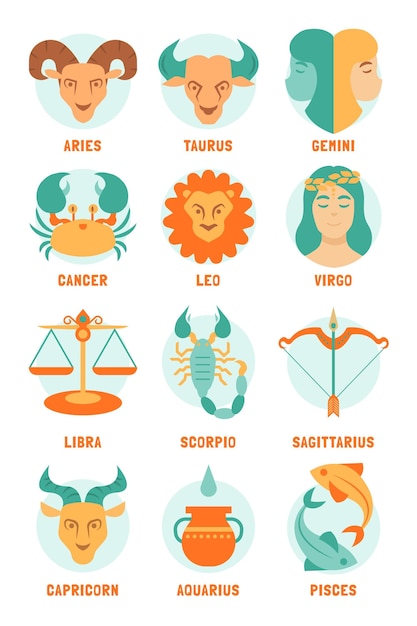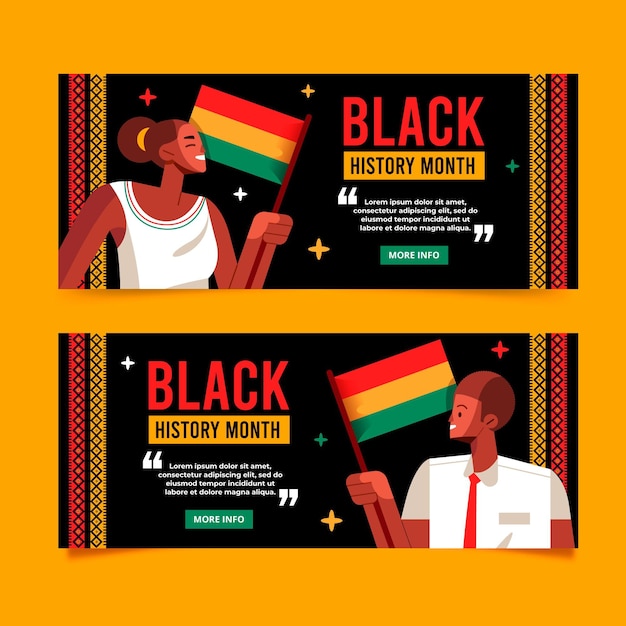Interesting Facts About Michael Jordan
Michael Jordan holds the record for the highest career scoring average in NBA history.
Jordan won six NBA championships during his career with the Chicago Bulls.
Michael Jordan’s famous Jumpman logo is one of the most recognizable symbols in the world.
Jordan is the only player to have won the scoring title and the Defensive Player of the Year award in the same season.
Michael Jordan is widely regarded as the greatest basketball player of all time.
Jordan’s competitive nature pushed his teammates to perform at their highest level.
Michael Jordan was inducted into the Basketball Hall of Fame in 2009.
Jordan has won five regular-season MVP awards throughout his career.
Michael Jordan’s iconic slam dunk from the free-throw line won him the 1988 NBA Slam Dunk Contest.
Jordan’s ability to perform under pressure earned him the nickname Clutch Jordan.
Michael Jordan scored a career-high 69 points against the Cleveland Cavaliers on March 28, 1990.
Jordan had a successful career in baseball, playing for the Chicago White Sox’s minor league affiliate.
Michael Jordan is the majority owner of the Charlotte Hornets NBA team.
Jordan is known for his incredible hangtime and ability to stay in the air longer than other players.
Michael Jordan’s competitive spirit extended beyond basketball and into other ventures, such as golf.
Jordan once scored 63 points in a playoff game against the Boston Celtics, setting a record that still stands today.
Michael Jordan popularized baggy shorts in the NBA, a trend that became synonymous with the ’90s basketball era.
Jordan’s signature line of sneakers, Air Jordans, became a global phenomenon and a major part of popular culture.
Michael Jordan’s jerseys with the number 23 are among the all-time best-selling NBA jerseys.
Jordan made a cameo appearance in the movie Space Jam, where he played himself alongside Looney Tunes characters.
Michael Jordan was named to the NBA All-Defensive First Team nine times in his career.
Jordan’s rivalry with Detroit Pistons’ Bad Boys led to some intense and physical playoff battles.
Michael Jordan’s leaping ability and acrobatic moves made him a fan-favorite and a highlight reel regular.
Jordan’s competitiveness translated into his personal life, where he often engaged in high-stakes gambling.
Michael Jordan’s flu game in the 1997 NBA Finals, where he scored 38 points while suffering from flu-like symptoms, is one of his most memorable performances.
Jordan’s combination of skill, athleticism, and mental toughness set a new standard for basketball excellence.
Michael Jordan’s charisma and marketability off the court helped make him one of the world’s most recognizable athletes.
Jordan’s impact on popular culture extended beyond sports, influencing fashion, music, and advertising.
Michael Jordan’s autobiography, For the Love of the Game, offers insight into his mindset and approach to basketball.
Jordan’s competitive drive led him to comeback from retirement twice, first in 1995 and again in 200
Michael Jordan’s college career includes hitting the game-winning shot in the 1982 NCAA Championship game for the University of North Carolina.
Jordan’s philanthropic efforts include establishing the Michael Jordan Foundation, which focuses on youth and education.
Michael Jordan’s dedication to his craft inspired a new generation of basketball players to strive for greatness.
Jordan’s impact on the sneaker industry revolutionized the way athletes and consumers approach athletic footwear.
Michael Jordan’s jersey retirement ceremony at the United Center drew a sold-out crowd and emotional tributes from his former teammates and opponents.
Jordan’s competitive nature extended off the court, as he would often challenge teammates and friends to games of cards or golf.
Michael Jordan’s work ethic and commitment to improving his skills set an example for aspiring athletes around the world.
Jordan’s clutch performances in crucial moments helped solidify his legacy as one of the greatest winners in sports history.
Michael Jordan was the face of the Dream Team, the historic 1992 USA men’s basketball team that won the gold medal at the Barcelona Olympics.
Jordan’s influence can be seen in today’s NBA, where many players strive to emulate his style of play and sought-after brand.
Michael Jordan’s competitive fire and determination often manifested in trash-talking his opponents to gain a mental edge.
Jordan’s ability to elevate his game in high-pressure situations earned him the nickname Air Jordan.
Michael Jordan’s iconic fadeaway jump shot became his signature move and was nearly impossible to defend.
Jordan’s impact on the city of Chicago and his contributions to the community have made him a beloved figure in the city’s history.
Michael Jordan’s enduring legacy will forever be tied to his unmatched greatness on the basketball court, serving as an inspiration to future generations of athletes.
Amazing Facts about Martin Luther King Jr.
Martin Luther King Jr. was born on January 15, 1929, in Atlanta, Georgia.
He was an exceptional student, skipping both the ninth and twelfth grades.
King entered Morehouse College at the age of 15, where he studied sociology and theology.
He was elected president of the Southern Christian Leadership Conference (SCLC) in 1957.
King’s famous I Have a Dream speech was delivered during the March on Washington for Jobs and Freedom on August 28, 1963.
In 1964, King became the youngest person ever to receive the Nobel Peace Prize at the age of
7. King’s favorite gospel song was Take My Hand, Precious Lord.
He was inspired by Mahatma Gandhi’s nonviolent methods and used them in the Civil Rights Movement.
King was once stabbed by a mentally ill woman during a book signing in 1958.
He led the Montgomery bus boycott, which lasted for 382 days, successfully desegregating the city’s bus system.
King was jailed 29 times for civil rights protests and actions.
His birth name was Michael King Jr., but his father later changed both of their names to honor the German theologian Martin Luther.
King’s campaigns for civil rights led to the passing of the Civil Rights Act of 1964 and the Voting Rights Act of 1965.
He participated in a 54-mile march from Selma to Montgomery to protest voting discrimination against African Americans, which became known as Bloody Sunday.
King’s leadership and advocacy helped to bring an end to racial segregation in public schools.
He is widely regarded as one of the greatest orators in American history.
King and his wife, Coretta Scott King, had four children together.
He was posthumously awarded the Presidential Medal of Freedom by President Jimmy Carter in 1977.
King’s Letter from Birmingham Jail is considered one of the most important documents of the Civil Rights Movement.
He was a fan of the Boston Red Sox baseball team.
King earned his Ph.D. in systematic theology from Boston University in 1955.
He was influenced by Henry David Thoreau’s essay on civil disobedience.
King’s nonviolent protests sought to create a beloved community where all races could live harmoniously.
He was an advocate for workers’ rights and organized multiple fair labor demonstrations.
King delivered over 2,500 speeches, wrote five books, and published numerous articles during his lifetime.
He was a vegetarian and believed in the principles of nonviolence extending to all living beings.
King had a deep philosophical interest in the teachings of Plato and Aristotle.
His Mountaintop speech was delivered the day before his assassination in Memphis, Tennessee, on April 4, 1968.
King received a C+ in public speaking during his first year at seminary but later became renowned for his powerful speeches.
He was arrested for holding a prayer pilgrimage to Washington, D.C., in 1957.
King’s I Have a Dream speech was not originally included in his prepared remarks for the March on Washington but was improvised during the event.
He won a Grammy Award posthumously for Best Spoken Word Album in 1971 for his Why I Oppose the War in Vietnam speech.
King’s actions during the Civil Rights Movement earned him the nickname The Drum Major for Justice.
He was an advocate for economic justice and believed in the redistribution of wealth to eradicate poverty.
King expressed his support for birth control as a means of empowering African American women.
He received a posthumous Grammy Lifetime Achievement Award in 1999.
King made several visits to India, where he studied Gandhi’s principles of nonviolent resistance firsthand.
He is the only non-president to have a national holiday dedicated to his memory in the United States.
King’s childhood home in Atlanta, Georgia, is now a National Historic Site.
His birthday is celebrated on the third Monday of January each year.
King’s I Have a Dream speech is considered one of the defining moments of the American Civil Rights Movement.
He was nine years old when he first experienced racial segregation, as he was told to stop playing with a white friend.
King’s first major civil rights campaign was the Montgomery bus boycott, which began in 1955.
He believed in the power of love, saying, I have decided to stick with love… Hate is too great a burden to bear.
King’s legacy continues to inspire generations of activists fighting for justice and equality worldwide.
Fascinating Facts about Knights
Knights were skilled warriors who fought on horseback.
The knight’s code of chivalry emphasized honor, courage, and loyalty.
Knights wore heavy armor to protect themselves in battle.
Many knights participated in tournaments and jousting competitions.
Knights were often the well-trained, mounted warriors of the Middle Ages.
Knights were granted fiefdoms and lands for their service to the king.
The training to become a knight started at a young age.
Knights were expected to uphold the values of honesty and integrity.
Knights were admired for their bravery and gallantry.
Knights had a strong sense of duty towards their lord and kingdom.
Knights fought for justice and defended the weak.
Knights were an integral part of medieval warfare.
Knights were typically from noble families.
The knight’s primary weapon was a lance for jousting.
Knights often participated in crusades to retake the Holy Land.
Knights were known for their impressive horsemanship.
Knights were skilled not only in battle but also in etiquette and manners.
Becoming a knight was a lifelong commitment.
Knights wore coats of arms to identify themselves on the battlefield.
The ideal knight was skilled in swordsmanship, horsemanship, and archery.
Knights were often portrayed as heroes in literature and legends.
Knights would take part in military campaigns led by their liege lords.
Knights participated in ceremonial events and were a symbol of power and authority.
Knights had a specific code of conduct that dictated their behavior.
Knights were often required to serve their lords both in war and peacetime.
Knightly orders, such as the Knights Templar, played a significant role during the Crusades.
Knights were expected to show respect and courtesy towards women.
Knights often had squires who assisted them in battle and took care of their armor.
Knights were an essential part of the feudal system.
Knights were heavily influenced by the ideals of courtly love.
Knights were responsible for the protection of their lord’s lands and people.
Knighthood was often granted as a reward for exceptional service or valor.
Knights trained extensively in various battle techniques and combat skills.
Knights were often depicted in full armor on horseback, representing strength and power.
Knights were expected to serve as role models for society.
Knights would participate in medieval tournaments to showcase their skills.
Knights were bound by oaths of loyalty and vowed to defend their lord and kingdom.
Knights adhered to a strict hierarchy within their order or in service to a noble family.
Knights were known for their jousting skills, which involved charging at each other with lances.
Knights were often called upon to resolve disputes and conflicts between lords.
Knights would often wear a tabard over their armor, displaying their heraldic symbols.
Knights were frequently depicted in medieval art and tapestries.
Knights were sometimes involved in diplomatic missions and negotiations.
Knights enjoyed prestige and received special privileges in medieval society.
Knights were an essential part of medieval culture and remain a symbol of honor and valor.
Interesting Fun Facts About Andrew Johnson
Did you know that Andrew Johnson was the first president to be impeached?
Andrew Johnson was originally a tailor by trade before entering politics.
Johnson was the vice president under Abraham Lincoln and assumed the presidency after Lincoln’s assassination.
Johnson was born in poverty and never received a formal education.
Despite his lack of education, Johnson taught himself how to read and write.
Andrew Johnson was the only senator from a Confederate state to remain loyal to the Union during the Civil War.
Johnson was raised in North Carolina and later moved to Tennessee.
Andrew Johnson was known for his fiery speeches and strong Southern accent.
Johnson was the first president to be impeached, but he was ultimately acquitted by one vote in the Senate.
Johnson’s impeachment was mainly due to his opposition to radical reconstruction policies.
Andrew Johnson became president at a time of great turmoil and division in the United States.
Johnson’s presidency is often seen as a period of missed opportunities for reconciliation and healing.
Johnson had a strained relationship with Congress, which led to his impeachment.
Despite his impeachment, Johnson continued to serve in politics after his presidency.
Andrew Johnson was the first president to be photographed during his presidency.
Johnson’s presidency saw the purchase of Alaska from Russia.
When Johnson left office, he retired to his home in Tennessee.
Johnson was the only former president to serve in the U.S. Senate after leaving office.
Andrew Johnson was an advocate for the poor and worked to improve the lives of working-class Americans.
Johnson’s presidency is often overshadowed by the legacy of Abraham Lincoln.
Johnson pardoned thousands of former Confederates after the Civil War ended.
Johnson was a staunch opponent of racial equality and fought against civil rights legislation.
Andrew Johnson’s presidency saw the ratification of the 14th Amendment, which granted citizenship to former slaves.
Johnson vetoed the Civil Rights Act of 1866, which aimed to protect the rights of freed slaves.
Johnson’s presidency saw the first African American elected to Congress, Hiram Revels.
Andrew Johnson’s presidency is often ranked among the worst in history.
Johnson’s presidency saw the completion of the Transcontinental Railroad.
Johnson was known for his stubbornness and refusal to compromise.
Andrew Johnson’s presidency saw the ratification of the 15th Amendment, which granted African American men the right to vote.
Johnson was a proponent of states’ rights and believed in a limited role for the federal government.
Despite his controversial presidency, Johnson is still remembered as a champion for the working class.
Johnson’s presidency saw the passage of the Homestead Act, which granted land to settlers in the West.
Andrew Johnson was the first president to face an impeachment trial in the Senate.
Johnson’s presidency saw the construction of the Brooklyn Bridge.
Andrew Johnson’s presidency marked a period of reconstruction and rebuilding after the Civil War.
Johnson was a self-made man who rose from humble beginnings to become president.
Johnson pardoned many former Confederate officials, which led to accusations of leniency.
Despite his limited formal education, Johnson was a skilled orator and debater.
Johnson’s presidency saw the establishment of the first national park, Yellowstone.
Andrew Johnson believed in a strong executive power and frequently clashed with Congress.
Johnson was the last president to have been born in a log cabin.
Andrew Johnson’s presidency saw the annexation of the Midway Islands.
Johnson’s presidency saw the conclusion of the Civil War and the beginning of the Reconstruction Era.
Andrew Johnson’s presidency saw the end of slavery in the United States.
Despite his controversial presidency, Johnson is still remembered as a key figure in American history and politics.
Fascinating Facts About Floods for Kids
Did you know that floods are natural disasters that happen when there is too much water in an area?
Floods can be caused by heavy rain, melting snow, or even hurricanes.
It’s important to stay informed about flood warnings and evacuation orders from the authorities.
During a flood, it’s crucial to stay away from low-lying areas and move to higher ground.
Floodwaters can be dangerous and carry debris, so it’s essential to avoid walking or driving through them.
Did you know that floods can damage homes, buildings, and infrastructure?
Floods can also harm crops, which can affect the food supply in an area.
Flooding can cause power outages, making it important to have emergency supplies and a plan in place.
It’s crucial to listen to emergency officials and follow their instructions during a flood.
Floods can happen anywhere, so even if you don’t live near a river or the ocean, it’s essential to stay prepared.
Floods can be scary, but learning about them and how to stay safe can help calm your fears.
Did you know that some animals are better equipped to handle floods than humans?
Floods can create new habitats for certain species and contribute to biodiversity in an area.
Understanding how floods happen can help us develop better flood control measures in the future.
Flooding can disrupt transportation systems and make it difficult for people to move around.
Even after a flood, it’s important to be cautious as the water may have left behind hidden dangers.
Floods can impact communities for weeks or even months, so it’s crucial for everyone to support each other during these times.
Did you know that floods can cause soil erosion?
Flooding can also lead to water pollution when chemicals and contaminants are carried by the water.
It’s important to have an emergency plan in place, including a designated meeting point and contact information for family members.
Floods can cause significant financial losses for individuals and businesses.
Learning how to swim and practicing water safety can help protect you during a flood.
During a flood, it’s important to have a supply of clean drinking water, as tap water may become contaminated.
Understanding the signs and symptoms of flood-related diseases can help you seek medical attention if needed.
Floods can be devastating, but communities can come together to rebuild and recover.
Flooding can have long-term effects on a region’s economy, affecting jobs and businesses.
Did you know that floods have shaped the Earth’s landscapes over millions of years?
It’s important to keep an emergency kit stocked with essentials like food, water, and first aid supplies in case of a flood.
Flooding can cause psychological distress, so it’s important to seek support if you’re feeling overwhelmed.
During a flood, it’s crucial to stay away from downed power lines, as they can still be energized and pose a risk.
Flooding can cause severe damage to roads and bridges, leading to lengthy repair times.
Did you know that floods can contribute to the spread of diseases like malaria and dengue fever?
Learning how to properly sandbag can help protect your home from floodwaters.
It’s important to have a family communication plan in place in case you get separated during a flood.
Flooding can cause disruptions in access to healthcare services, so it’s important to have medications and first aid supplies readily available.
Did you know that floods can sometimes uncover archeological treasures hidden for centuries?
Flooding can cause emotional stress, so it’s important to practice self-care and reach out for help if needed.
During a flood, it’s essential to turn off utilities like electricity and gas to prevent accidents and damage.
Floods can lead to temporary or even permanent displacement of people from their homes.
Learning how to read flood maps can help you understand the risks in your area and take appropriate precautions.
Did you know that floods can cause landslides in hilly or mountainous regions?
Flooding can damage important infrastructure, like schools and hospitals, affecting a community’s ability to recover.
It’s important to have a plan for your pets during a flood, including provisions for their safety and care.
Flooding can cause shortages of essential supplies like food and clean water, highlighting the importance of disaster preparedness.
Did you know that floods can have cultural and historical significance, shaping the stories and traditions of communities over time?
Fun and Fascinating Facts About Japan for Kids
Japan is a country made up of four main islands.
Japan is famous for its delicious sushi.
The capital city of Japan is Tokyo.
Mount Fuji is the highest mountain in Japan.
Japan is known for its beautiful cherry blossoms in the spring.
Japanese people bow to show respect and gratitude.
Japan is famous for its high-speed bullet trains.
Sumo wrestling is a popular traditional sport in Japan.
Japanese houses often have sliding doors called shoji.
Japan is home to both traditional temples and modern skyscrapers.
The Japanese alphabet consists of three different writing systems.
Japanese people enjoy hot springs called onsen.
Japan has a unique culture of tea ceremonies.
Origami, the art of paper folding, originated in Japan.
Japan is a leading producer of high-tech gadgets and electronics.
The popular character Hello Kitty is from Japan.
Japanese manga and anime are loved by people around the world.
Japan is known for its efficient and clean public transportation system.
The traditional Japanese kimono is a beautiful and intricate garment.
Japan has a long history of samurai warriors.
Japanese cuisine includes a wide variety of delicious noodles like ramen and udon.
The traditional Japanese tea houses are peaceful and serene places.
Japan is famous for its impressive cherry tree festivals.
The Tokyo Skytree is one of the tallest towers in the world.
Japan is home to many unique and cute characters like Pikachu and Totoro.
The Great Buddha statue in Kamakura is a famous Japanese landmark.
The Japanese art of bonsai involves growing miniature trees in pots.
Japan is known for its efficient and punctual train system.
Japanese gardens are meticulously designed and offer peaceful retreats.
The game of karuta is a popular traditional card game in Japan.
Japan is an island nation surrounded by the Pacific Ocean.
The Japanese love to celebrate festivals and wear traditional attire during these times.
Japan is famous for its high-quality and innovative technology products.
The Tokyo Disney Resort is a popular amusement park in Japan.
Japanese calligraphy is an ancient art form that involves writing with a brush.
Japan is home to many beautiful and historic castles.
Japanese food is not only delicious but also presented beautifully.
The Shinkansen, or bullet train, was the first high-speed train in the world.
Japan has a unique system of etiquette and social norms.
The Japanese language has many honorifics to show respect when speaking.
Japan has a rich tradition of performing arts including kabuki and Noh theater.
Japan originated the art of manga, which includes comic books and graphic novels.
The Japanese love to enjoy firework displays called hanabi.
Japan has a national sport called sumo where wrestlers compete in a ring.
Japan is famous for its beautiful and intricate traditional kimonos.
Discovering Fascinating Facts about Leonardo da Vinci
Leonardo da Vinci was left-handed, just like many other famous artists and thinkers throughout history.
Leonardo da Vinci was a vegetarian and believed in the importance of respecting all living beings.
Leonardo da Vinci is known for his diverse talents, including painting, sculpture, architecture, and engineering.
Leonardo da Vinci’s most famous painting, the Mona Lisa, has no visible eyebrows.
Leonardo da Vinci was also a talented musician and is known to have played several musical instruments.
The Last Supper, another iconic painting by Leonardo da Vinci, took years to complete due to his meticulous attention to detail.
Leonardo da Vinci’s fascination with anatomy led him to perform dissections to better understand the human body.
Leonardo da Vinci designed innovative flying machines, anticipating the concept of human flight centuries before the invention of the airplane.
Leonardo da Vinci was a prolific writer, filling thousands of pages of notebooks with his observations, ideas, and sketches.
Leonardo da Vinci invented many devices, including a machine for cutting threads, a parachute, and a self-propelled cart.
Leonardo da Vinci developed an interest in math and was one of the first to apply mathematical principles to perspective in art.
Leonardo da Vinci’s Vitruvian Man is a famous illustration that explores the ideal human proportions.
Leonardo da Vinci painted the ceiling of the Sistine Chapel in Rome, which is often confused with Michelangelo’s work.
Leonardo da Vinci believed that art should be closely connected to nature and the natural world.
Leonardo da Vinci’s notebooks contain numerous ideas for inventions that were far ahead of their time, such as an early design for a helicopter.
Leonardo da Vinci was known for his relentless curiosity and desire to understand how things worked.
Leonardo da Vinci’s Codex Leicester, a collection of his scientific writings, was sold for a record-breaking $30.8 million in 1994.
Leonardo da Vinci was a lover of animals and kept a variety of pets, including birds, dogs, and cats.
Leonardo da Vinci was fascinated by water and conducted extensive studies on its movement and properties.
Leonardo da Vinci was ambidextrous, meaning he could write and draw with both hands.
Leonardo da Vinci’s painting, The Last Supper, suffered significant damage during World War II but was successfully restored.
Leonardo da Vinci was known for his mastery of sfumato, a painting technique that involves blending colors and tones to create a smoky, atmospheric effect.
Leonardo da Vinci’s famous Vitruvian Man drawing has been used as a symbol of the harmony between art and science.
Leonardo da Vinci’s curiosity extended to the natural world, and he even dissected animals to study their anatomy.
Leonardo da Vinci’s painting, The Baptism of Christ, was a collaborative work between him and his teacher, Verrocchio.
Leonardo da Vinci was admired by his contemporaries for his handsome appearance and charming personality.
Leonardo da Vinci’s notebooks reveal his fascination with the study of optics and the physics of light.
Leonardo da Vinci is often considered the epitome of the Renaissance man, embodying the era’s interest in the arts, sciences, and intellectual pursuits.
Leonardo da Vinci’s masterpiece, The Last Supper, is painted on the wall of a convent’s dining hall in Milan.
Leonardo da Vinci’s anatomical drawings were groundbreaking, providing detailed insights into the human body’s structure and functioning.
Leonardo da Vinci was an avid observer of nature and would often sketch plants and animals in his notebooks.
Leonardo da Vinci was a skilled mapmaker and contributed to the development of cartography.
Leonardo da Vinci’s fascination with water extended to hydraulic engineering, and he designed several ingenious water features for gardens and fountains.
Leonardo da Vinci is believed to have created over 7,000 pages of scientific data and sketches throughout his lifetime.
Leonardo da Vinci’s artistic genius went beyond painting, as he also worked as a sculptor and architect.
Leonardo da Vinci’s preferred medium for drawing was silverpoint, which involves using a silver wire on a prepared surface.
Leonardo da Vinci was an advocate for education and believed that all people should have access to learning.
Leonardo da Vinci’s painting, The Annunciation, is housed in the Uffizi Gallery in Florence and showcases his mastery of light and shadow.
Leonardo da Vinci invented an early version of the armored tank, demonstrating his innovative thinking in military technology.
Leonardo da Vinci’s painting, The Virgin and Child with Saint Anne, is considered one of his most emotionally complex works.
Leonardo da Vinci was fascinated by mirror writing and often wrote his notes and personal correspondence in this manner.
Leonardo da Vinci’s early sketches and studies showcase his ability to capture movement and the human form with incredible accuracy.
Leonardo da Vinci was known for his unconventional lifestyle and often chose to live alone or with close apprentices.
Leonardo da Vinci’s artistic legacy continues to inspire countless artists and creators today.
Leonardo da Vinci’s Mona Lisa is renowned for her enigmatic smile, which continues to captivate viewers centuries after its creation.
Hungary – A Fascinating Look at its Facts and Features
Hungary is home to the world’s largest thermal water cave system.
The Hungarian language is said to be one of the most unique and difficult languages to learn.
Budapest, the capital of Hungary, is often referred to as the Pearl of the Danube due to its stunning beauty.
Hungary is famous for its delicious cuisine, with dishes like goulash and chimney cake being popular favorites.
Lake Balaton, located in Hungary, is the largest lake in Central Europe.
Hungary has a rich and diverse cultural heritage, with influences from Turkish, Austrian, and Romanian cultures.
The Hungarian State Opera House in Budapest is renowned for its stunning architecture and world-class performances.
The Rubik’s Cube was invented by Hungarian architect Ernő Rubik in 1974.
Hungary is known for its thriving wine industry, with Tokaj being one of the most famous wine regions.
The Hungarian Grand Prix is a popular event in Formula One racing, held annually at the Hungaroring.
Hungary has a long history of producing talented mathematicians and scientists.
The Hungarian Parliament Building in Budapest is one of the largest and most beautiful parliament buildings in the world.
Hungarians have a strong tradition of folk dancing and music, with the Hungarian State Folk Ensemble being widely acclaimed.
Hungary is home to the second-largest synagogue in the world, the Dohány Street Synagogue in Budapest.
Hungary has a well-preserved medieval castle, Buda Castle, which offers breathtaking views of the city.
The Hungarian countryside is dotted with charming traditional villages and picturesque landscapes.
Hungary has a rich tradition of thermal baths, with many people visiting for spa and wellness tourism.
Hungarian composer Franz Liszt is considered one of the greatest pianists in history.
Hungary has a vibrant contemporary art scene, with the Budapest Art Week attracting artists and art enthusiasts from around the world.
The Hungarians have a unique traditional costume called the szűr, a long cloak-like garment.
Hungary has a high concentration of natural hot springs, making it a popular destination for wellness retreats.
Hungarian composer Béla Bartók is famous for his contributions to classical music and ethnomusicology.
Hungary is known for its traditional horseback archery competitions, called lovaglás.
Budapest has an extensive network of underground caves, some of which are open to the public for exploration.
Hungary is home to the famous Chain Bridge, which connects the Buda and Pest sides of Budapest.
Hungarian physicist Leo Szilard played a key role in the development of the atomic bomb.
Hungary has a strong tradition of folklore and mythology, with stories of legendary figures like King Matthias Corvinus.
Hungary has a unique Christmas tradition called the Hungarian Advent Calendar, which features 24 days leading up to Christmas Eve.
Hungarian novelist and Nobel laureate Imre Kertész is known for his powerful and poignant works about the Holocaust.
Hungary is a popular filming location for movies, with Budapest being particularly favored for its stunning architecture.
Hungarian inventor András Pintér created the first modern ballpoint pen in 19
Hungary has a rich tradition of puppetry, with the Budapest Puppet Theater being one of the oldest in Europe.
Hungarian mathematician Paul Erdős is renowned for his contributions to number theory and graph theory.
Hungary has a strong tradition of craftsmanship, with folk artists creating beautiful hand-painted ceramics and intricate embroideries.
Budapest is home to the famous Margaret Island, a green oasis in the middle of the Danube River.
Hungarian poet János Arany is considered one of the most important figures in Hungarian literature.
Hungary has a unique Easter tradition called sprinkling, where boys playfully sprinkle water on girls in exchange for decorated eggs.
Hungarian architect Ludwig Mies van der Rohe was a pioneer of modernist architecture and is known for his famous phrase less is more.
Hungary has a strong tradition of wine cellars carved into the hillsides, offering cool and atmospheric spaces for wine storage.
Hungarian artist Victor Vasarely is considered the father of the Op Art movement, famous for his mesmerizing geometric patterns.
Hungary is known for its picturesque countryside, with charming villages and rolling hills dotted with vineyards.
Hungarian composer Zoltán Kodály played a crucial role in preserving and promoting Hungarian folk music.
Hungary has a rich tradition of ornate and colorful folk costumes, which are still worn during traditional festivals and events.
Budapest is home to the largest synagogue in Europe, the Great Synagogue, which can accommodate up to 3,000 worshippers.
Hungary is famous for its vibrant music festivals, including Sziget Festival, which attracts hundreds of thousands of visitors each year.
Fascinating Facts About Cobras
Cobras are venomous snakes found in various parts of the world.
The king cobra is the longest venomous snake, reaching up to 18 feet in length.
Cobras have a characteristic hood, which they raise when threatened.
Cobras are known for their distinctive hissing sound.
The venom of cobras can be deadly to humans if not treated immediately.
Cobras are expert hunters, particularly in the dark.
Cobras primarily feed on rodents, birds, and other small animals.
Cobras have excellent vision and can detect movement from a considerable distance.
Cobras are highly adaptable and can survive in a variety of habitats, including forests, deserts, and grasslands.
Cobras play an important role in maintaining the ecosystem by controlling rodent populations.
Cobras have been revered and feared in several cultures throughout history.
The venom of cobras has been used in some traditional medicines.
Cobras are known for their unique ability to glide across water surfaces, enabling them to swim efficiently.
The venom of certain cobras contains neurotoxins that paralyze their prey.
Cobras have a lifespan of around 20 years in the wild.
Cobras have a strong association with ancient Egyptian civilization, often depicted in hieroglyphs and sculptures.
The Indian cobra is one of the most widely recognized species.
The venom of cobras affects the nervous system, causing paralysis and respiratory failure.
Cobras undergo a process called ecdysis, where they shed their skin periodically.
The spitting cobra has the unique ability to project its venom accurately at a target’s eyes.
Cobras have a specialized venom delivery system called hollow fangs.
Cobras are capable of rearing up a third of their body length when threatened.
Cobras are solitary reptiles and prefer to avoid encounters with humans.
The hood of a cobra is made up of elongated ribs and skin.
Cobras are known to be highly intelligent snakes.
The king cobra can raise its body to a height of six feet when threatened.
Cobras have heat-sensitive pits on their faces, allowing them to detect prey even in the dark.
Cobras exhibit unique mating rituals, including courtship dances and territorial displays.
Cobras are cold-blooded creatures, relying on external sources of heat to regulate their body temperature.
Cobras are excellent climbers and can scale trees and walls effortlessly.
The venom of cobras has the potential for medical research, including pain management and drug development.
The spectacled cobra gets its name from the spectacled pattern on the hood.
Cobras can go for several months without eating, surviving on their fat reserves.
The black mamba is the fastest snake in the world, known for its incredible speed and agility.
Cobras have been featured prominently in mythology and folklore worldwide for centuries.
Cobras can strike with extreme accuracy and speed, often delivering fatal bites.
Cobras have retractable fangs, which they fold back against the roof of their mouth.
Certain species of cobras, like the Egyptian cobra, can spray venom as a defensive mechanism.
Cobras have a reputation as being majestic and mysterious creatures.
The venom of cobras contains enzymes that break down tissues and initiate digestion of prey.
Cobras are known to exhibit aggressive behavior when they feel threatened.
The venom of cobras is being researched for potential use in cancer treatments.
Cobras molt their skin several times per year, allowing for growth and healing of injuries.
Cobras have a lifespan of around 25 years in captivity.
The bite of a cobra should be treated as a medical emergency, requiring immediate professional attention.
Fascinating Facts about Birds
Birds have hollow bones, making them lightweight and enabling them to fly.
The ostrich is the largest bird in the world and cannot fly.
Penguins are birds that cannot fly but are excellent swimmers.
The hummingbird is the smallest bird in the world and can fly backwards.
Birds have feathers that help them regulate their body temperature and facilitate flight.
The albatross has the longest wingspan of any bird, reaching up to 11.5 feet.
Birds have a highly developed respiratory system, allowing them to extract more oxygen from the air than mammals.
Falcons are known for their exceptional speed and are considered some of the fastest birds in the world.
Some species of birds, such as crows and parrots, are known for their ability to mimic human speech.
Birds have excellent eyesight, often much better than humans, allowing them to spot prey from great distances.
Ducks have a unique feature called the lip at the edge of their beaks, which allows them to filter out water and retain food.
Birds play a crucial role in pollination by spreading pollen from flower to flower as they feed.
The kiwi bird, native to New Zealand, is flightless, has hair-like feathers, and lays the largest eggs relative to its body size.
Many bird species migrate thousands of miles each year to find better food sources and breeding grounds.
Bald eagles are known for their impressive hunting skills and can dive at speeds of up to 100 miles per hour.
Birds have zygodactyl feet, which means their toes are arranged in a pattern with two pointing forward and two pointing backward.
The weight of a bird’s brain is relatively large compared to its body weight, indicating their high cognitive abilities.
The toucan’s large and colorful beak is primarily used for attracting mates and regulating its body temperature.
The African grey parrot is considered one of the most intelligent bird species and can learn a wide vocabulary of words and phrases.
Some bird species, such as cormorants, have evolved the ability to dive into water and swim underwater to catch fish.
The Northern cardinal is known for its beautiful red plumage and distinctive song.
Birds have a specialized organ called the gizzard, which helps them grind and digest tough food like seeds and insects.
Many bird species engage in elaborate courtship rituals to attract mates, including unique dances and displays of feathers.
The peregrine falcon is the fastest bird in level flight, reaching speeds of over 240 miles per hour during hunting dives.
The lyrebird is known for its ability to mimic a wide variety of sounds, including other bird calls, human voices, and even car alarms.
Birds are descendants of dinosaurs and share several characteristics with their ancient ancestors.
The honeyguide bird leads humans and other animals to beehives, signaling them with specific calls in exchange for a share of the honey.
Some bird species, like the blackbird, can recognize themselves in mirrors, demonstrating a level of self-awareness.
The puffin is an expert diver and can swim underwater to catch fish in deep waters.
Many bird species engage in communal roosting, gathering in large numbers to rest and sleep together.
The flamingo’s pink coloration comes from their diet, which consists mainly of shrimp and other organisms rich in pigments.
The male bowerbird builds elaborate structures, called bowers, to attract females, decorating them with colorful objects.
Birds have a highly developed sense of hearing, allowing them to detect sounds at various frequencies.
The hornbill bird has a unique casque on its beak, which helps amplify its calls and serves as a display during courtship.
Some bird species, like the American goldfinch, undergo a complete change in plumage during breeding season, called molting.
Birds have a third eyelid, called the nictitating membrane, which provides additional protection for their eyes while flying.
The peacock has an elaborate plumage display, fanning out its tail feathers to attract females.
Many bird species, such as pigeons and homing pigeons, have a remarkable ability to navigate and find their way back to their homes over long distances.
Birds have a highly efficient circulatory system, allowing them to withstand the physical demands of flight.
The tawny frogmouth, native to Australia, has excellent camouflage, resembling a broken branch during the day.
Some bird species, like the African jacana, have evolved an unusual mating system called polyandry, where females mate with multiple males who then care for the eggs and offspring.
Birds have an exceptional sense of balance, allowing them to perch on branches or walk on narrow surfaces with ease.
The hoopoe bird has a distinct crown of feathers on its head, which can be raised and lowered as part of its courtship display.
Birds, like robins, have a keen sense of geomagnetic fields, helping them navigate during migrations.
The Australian lyrebird is known for its remarkable ability to mimic not only other bird calls but also sounds from the environment, such as chainsaws and camera shutters.
Interesting Facts About Beluga Whales
Beluga whales are known for their distinctive white color, which sets them apart from other whale species.
Belugas are highly social creatures, often traveling in groups called pods.
These majestic creatures are found in Arctic and sub-Arctic waters, including the coasts of Russia, Alaska, and Canada.
Beluga whales are known for their flexibility and ability to twist and turn their bodies, making them highly maneuverable in the water.
Belugas have a unique vocalization system and are often referred to as the canaries of the sea due to their melodic calls.
Beluga whales are incredibly intelligent and are known for their problem-solving abilities.
The average lifespan of a beluga whale is 35-50 years, although some individuals have been known to live up to 60 years.
Belugas have a layer of blubber that helps to keep them warm in the frigid Arctic waters.
These whales are known for their playful nature and can often be seen breaching and performing acrobatic displays.
Belugas have a bulbous forehead, known as a melon, which helps with echolocation and communication.
These whales are carnivorous, feeding on fish, squid, and crustaceans found in their habitats.
The gestation period for beluga whales is around 14-15 months, one of the longest for any mammal.
Belugas have a unique ability to change the shape of their vocalizations, allowing them to mimic various sounds and even human speech.
These whales have a flexible neck, which enables them to move their heads in different directions to scan their surroundings.
Beluga whales have a thick layer of fat, allowing them to store energy and survive in areas where food may be scarce.
These whales migrate to warmer waters during the summer months, often traveling long distances to find suitable feeding grounds.
Belugas are known to be curious animals and have been known to interact with humans, approaching boats and divers.
These whales have a well-developed sense of hearing, which helps them navigate and communicate in their often murky underwater environments.
Belugas have a small dorsal fin compared to other whale species, which allows them to swim under ice and navigate in shallow waters.
These whales have a lifespan similar to that of humans, and each beluga has its own unique personality and behavior patterns.
Belugas are known for their ability to swim backward, a skill not commonly observed in other whale species.
These whales are highly adaptable and have been known to survive in captivity, making them popular attractions in marine parks and aquariums.
Beluga whales have a mottled pink or purplish color when they are born, gradually changing to white as they mature.
These whales have a flexible neck, which enables them to turn their heads vertically and feed on prey near the surface of the water.
Belugas have a layer of blubber that not only helps with insulation but also acts as a buoyancy aid, allowing them to stay afloat easily.
These whales are known to dive to impressive depths of up to 700 meters in search of food.
Beluga whales have a robust immune system, enabling them to survive in extreme Arctic conditions and resist diseases.
These intelligent creatures can recognize themselves in mirrors, a sign of self-awareness and advanced cognitive abilities.
Belugas have a specialized bump on their head called a melon, which aids in echolocation and communication.
These whales have a varied diet, including species such as salmon, herring, cod, and even small crustaceans.
Beluga whales are known for their strong maternal instincts, with mothers caring for their calves for up to two years.
These whales are capable of producing a wide range of vocalizations, including clicks, whistles, and squawks.
Belugas have a streamlined body shape, which allows them to move swiftly through the water, reaching speeds up to 15 mph.
These whales have a preference for shallow coastal waters but can also be found in deeper offshore areas.
Beluga whales have a layer of blubber up to 4 inches thick, which helps to insulate them in the frigid Arctic waters.
These whales have a flexible neck, allowing them to tilt their heads to the side while swimming and hunting.
Belugas are known to form strong social bonds within their pods, often cooperating during hunting and protecting each other from predators.
These whales have a unique adaptation called a dorsal ridge, which helps them swim powerfully through the water.
Belugas communicate through a combination of vocalizations, body movements, and facial expressions.
These whales have a playful nature, often engaging in games such as keep away with objects they find in the water.
Beluga whales are able to move their facial muscles, giving them the ability to smile and express different emotions.
These unique creatures have a specialized blowhole that allows them to exhale sharply, creating a distinctive spray of water in the air.
Belugas have a diverse range of hunting techniques, including cooperative hunting, stunning prey with tail slaps, and blowing bubbles to herd fish.
These whales can live in a wide range of water salinities, from freshwater river estuaries to saltwater environments, thanks to their adaptability.
Beluga whales are highly migratory and have been recorded traveling over 4,000 miles in a single season, making them one of the most impressive travelers in the animal kingdom.
Aries Facts – Everything You Need to Know About this Fiery Zodiac Sign
Aries are known for their fiery and passionate nature.
Aries love a good challenge and thrive on competition.
Aries are natural-born leaders and are often found in positions of authority.
Aries have a strong sense of independence and don’t like to be controlled.
Aries are known for their impulsive nature and can act on instinct without thinking things through.
Aries are incredibly loyal and will always stand up for their loved ones.
Aries are quick thinkers and can come up with creative solutions to problems.
Aries have a strong sense of justice and will fight for what they believe in.
Aries are natural-born adventurers and love to explore new horizons.
Aries have a magnetic personality that draws others towards them.
Aries are known for their optimism and positive outlook on life.
Aries have a strong intuition and can often sense things before they happen.
Aries are fiercely independent and don’t like to rely on others.
Aries are natural-born risk-takers and aren’t afraid to take chances.
Aries are known for their strong communication skills and can be persuasive in their arguments.
Aries have a competitive nature and enjoy participating in sports or other activities that allow them to showcase their skills.
Aries have a natural charm that makes them incredibly charismatic.
Aries are known for their determination and willpower to achieve their goals.
Aries have a strong sense of self and are confident in who they are.
Aries are known for their quick tempers and can be easily provoked.
Aries are incredibly passionate in everything they do, whether it’s work or love.
Aries have a strong sense of adventure and are always up for trying something new.
Aries love to be the center of attention and thrive in social situations.
Aries are natural-born problem solvers and can think outside the box.
Aries are known for their honesty and directness, sometimes to a fault.
Aries have a strong sense of loyalty and will always be there for their friends and family.
Aries have a strong sense of justice and will fight for what they believe is right.
Aries are known for their independence and don’t like to be tied down.
Aries have a magnetic personality that attracts others to them.
Aries are always up for a challenge and enjoy pushing themselves to their limits.
Aries have a strong sense of self and don’t rely on others for validation.
Aries have a contagious enthusiasm that can inspire others to join in their pursuits.
Aries are known for their fiery passion in romantic relationships.
Aries are natural-born leaders and excel in positions of authority.
Aries have a strong sense of intuition and can often sense when something is off.
Aries have a quick wit and can come up with clever comebacks on the spot.
Aries have a natural charisma that makes them the life of the party.
Aries have a strong sense of justice and will always fight for what they believe is right.
Aries have an adventurous spirit that leads them to explore new places and try new things.
Aries are known for their determination and drive to succeed in whatever they do.
Aries have a magnetic personality that draws others towards them.
Aries have a strong sense of self and don’t easily conform to societal norms.
Aries have a fiery and passionate love life that is never dull.
Aries have a strong willpower and can overcome any obstacle that comes their way.
Aries are natural-born leaders and are not afraid to take charge in any situation.
Discover the Fascinating Fun Facts about Japan
Japan is known for having more than 6,800 islands.
The official name of Japan is Nippon or Nihon, which means origin of the sun.
Sumo wrestling is Japan’s national sport.
Tokyo, the capital of Japan, is the most populous city in the world.
Japan has the highest number of vending machines per capita.
The Japanese word for a cherry blossom is sakura.
Japan experiences over 1,500 earthquakes every year.
The average life expectancy in Japan is 84 years, one of the highest in the world.
Japan is home to the world’s first novel, The Tale of Genji, written in the 11th century.
Karaoke is a popular activity in Japan, with more than 100,000 karaoke bars across the country.
The bullet trains in Japan can reach speeds of up to 320 kilometers per hour.
The Japanese art of paper folding is called origami.
Japan is known for its unique and colorful vending machines, which sell everything from hot meals to underwear.
Bathing in hot springs, known as onsen, is a popular pastime in Japan.
The Japanese cuisine is rich in seafood and rice dishes, such as sushi and ramen.
Japan has a cat island, called Tashirojima, where cats outnumber humans.
The Tokyo Skytree is the tallest tower in the world, standing at 634 meters.
Japan has 21 World Heritage Sites, including temples, castles, and natural landmarks.
The Japanese tradition of Hanami involves picnicking under cherry blossom trees.
Japan’s Mount Fuji is an active volcano and the highest peak in the country.
The invention of instant noodles is attributed to a Japanese man named Momofuku Ando.
The Japanese writing system consists of three scripts: Hiragana, Katakana, and Kanji.
Japan has the second-highest number of three-star Michelin restaurants in the world, after France.
The famous video game characters Mario and Pokemon were created in Japan.
Japanese baseball is a popular sport, with teams often followed with great enthusiasm.
Japan has more than 200 castles, including Himeji Castle, a UNESCO World Heritage Site.
The Japanese believe in various superstitions, such as the number 4 being considered unlucky.
Mount Fuji has inspired countless artists and is depicted in numerous paintings and prints.
Japan is home to the world’s busiest pedestrian intersection, the Shibuya Crossing.
Kyoto was the capital of Japan for over 1,000 years and is known for its traditional temples and gardens.
Japan has over 1,500 species of fish, making it a paradise for seafood lovers.
Pachinko, a popular Japanese arcade game, is often regarded as a gambling activity.
Japan’s Shinkansen, or bullet train, has a near-perfect safety record since its inception in 1964.
The vending machines in Japan not only sell drinks but also items like fresh eggs and umbrellas.
Japan is known for its efficient public transportation system, including trains and buses.
The Japanese alphabet consists of 46 characters.
Japan is famous for its intricate and delicate traditional pottery, such as the blue-and-white Arita ware.
The island of Okinawa in Japan has one of the highest concentrations of centenarians in the world.
Japan is the birthplace of karate, a popular martial art that focuses on striking techniques.
Many vending machines in Japan offer hot drinks, such as coffee and tea, even in colder months.
The Japanese have a unique way of expressing gratitude by bowing, which varies depending on the situation and degree of thanks.
Japan is known for its efficient and reliable train system, which is rarely late.
The Jigokudani Monkey Park in Japan allows visitors to observe wild monkeys bathing in hot springs during the winter.
Japan introduced emoji, which became popular globally and are now used in various digital communication platforms.
The annual cherry blossom season, known as hanami, attracts millions of tourists from all over the world to Japan.
Interesting Facts About Blue Whales
Blue whales are the largest animals to have ever existed on Earth.
The heart of a blue whale is so big that a human could swim through its arteries.
Blue whales can grow up to 100 feet long, which is about the length of three school buses.
These majestic creatures can weigh as much as 200 tons, equivalent to 33 African elephants.
Blue whales are known for their distinctive blue-gray color, hence their name.
Despite their enormous size, these gentle giants primarily feed on tiny shrimp-like animals called krill.
Each day, a blue whale can consume up to 4 tons of krill, which is roughly equivalent to 40,000 hamburgers.
Blue whales have baleen plates in their mouths that act as a filter, allowing them to push out excess water while retaining the krill.
They have the loudest call of any animal, reaching levels of 188 decibels, which can be heard up to 1,000 miles away.
Blue whale songs can last anywhere from 10 to 20 minutes and are believed to be a form of communication.
These magnificent creatures can live up to 90 years or more, making them one of the longest-lived animals.
Their blowholes, located on top of their heads, can spout water up to 30 feet high when they surface to breathe.
Blue whales can hold their breath for up to 20 minutes before resurfacing.
They have two blowholes, whereas other whales generally have one.
Blue whales are excellent swimmers, reaching speeds of up to 20 miles per hour.
Despite their massive size, blue whales are incredibly agile and can easily maneuver in the water.
They have a series of pleats on their throat, allowing their mouths to expand and accommodate large amounts of krill.
The spout or blow from a blue whale often appears heart-shaped due to the position of its two blowholes.
Blue whales have distinctive mottled patterns on their skin, which are unique to each individual.
Calves are born weighing approximately 3 tons and measuring around 23 feet in length.
Baby blue whales drink around 50 gallons of their mother’s milk per day, gaining incredible amounts of weight during their first year of life.
Blue whales are migratory creatures and can travel thousands of miles to find feeding grounds.
They undertake the longest migration of any mammal, with some individuals traveling over 10,000 miles each year.
Blue whales are highly social animals and are often found in groups called pods.
Pods can consist of anywhere between 5 and 50 individuals.
Blue whales are found in oceans around the world, with populations scattered across different regions.
The population of blue whales was significantly reduced due to commercial whaling, but conservation efforts have helped them recover to some extent.
Blue whales have unique flukes (tails) that help scientists identify and track them.
Despite their size and massive appetite, blue whales defecate with a pinkish hue due to the excretion of shrimp-like krill.
These incredible creatures can instantly change direction while swimming, using their massive tails.
Blue whales are classified as endangered species due to their historical decline in numbers.
Blue whales are known to breach, or jump out of the water, showcasing their immense power and grace.
The original name for the blue whale comes from the Latin Sibbald’s Rorqual.
The baleen of a blue whale is made of keratin, the same substance that makes up human hair and nails.
Blue whales were once hunted for their blubber, which was used to make oil for lamps and other products.
It is estimated that blue whales can consume up to 40 million krill in a day.
The frequency of blue whale vocalizations is too low for humans to hear without the assistance of special equipment.
Blue whales have a layer of blubber, which serves as insulation and energy storage.
These giants of the sea have a distinctive dorsal fin that can help in identification.
Blue whales have been recorded diving to depths of up to 1,500 feet during feeding.
The population of blue whales in the Northern Hemisphere is believed to be relatively smaller compared to the Southern Hemisphere.
Blue whales have an esophagus wide enough to allow a small child to crawl through it.
These gentle giants are known to migrate to warmer waters during the breeding season.
The oil extracted from blue whale blubber was considered a premium product due to its high quality and low acidity.
Blue whales are a vital part of the marine ecosystem, as their feeding habits help maintain the balance of marine life and the health of our oceans.
Unveiling the Truth – Rohypnol Facts
Rohypnol, also known as the date rape drug, is a powerful sedative.
Rohypnol is not legally available in the United States.
The use of Rohypnol as a recreational drug is illegal.
Rohypnol can cause amnesia, making it difficult for victims to remember what happened while under its influence.
Individuals who use Rohypnol without a prescription are putting their health and safety at risk.
The effects of Rohypnol can be unpredictable and dangerous.
Rohypnol is often used by sexual predators to incapacitate their victims.
Parents should educate their children about the dangers of Rohypnol and other date rape drugs.
Rohypnol can be easily slipped into a drink without the victim’s knowledge.
Awareness and prevention are crucial in combating the use of Rohypnol for illicit purposes.
Rohypnol is classified as a Schedule IV controlled substance due to its high potential for abuse and dependence.
The withdrawal symptoms from Rohypnol can be severe and require medical intervention.
Research has shown a correlation between Rohypnol use and an increased risk of sexual assault.
Combating the illegal production and distribution of Rohypnol is vital to protecting vulnerable individuals.
Educating medical professionals about the signs and symptoms of Rohypnol abuse is essential.
Rohypnol has been banned in many countries due to its harmful effects.
Reports have shown a significant increase in Rohypnol-related crimes in recent years.
The long-term effects of Rohypnol abuse can be detrimental to physical and mental health.
Rohypnol is odorless and colorless, making it difficult to detect when added to a beverage.
It is crucial to support survivors of Rohypnol-related crimes and help them seek justice.
National guidelines should be established to ensure consistent prosecution of Rohypnol-related offenses.
Rohypnol can interact with other substances, including alcohol, leading to severe health complications.
Substance abuse treatment centers play a vital role in helping individuals recover from Rohypnol addiction.
Rohypnol is known by various street names, including roofies and R2.
Misuse of Rohypnol can result in severe respiratory depression and unconsciousness.
Victims of Rohypnol-related crimes should not blame themselves; the fault lies with the perpetrator.
Law enforcement agencies should prioritize the investigation and prevention of Rohypnol-related offenses.
Rohypnol can impair judgment and decision-making, increasing the risk of engaging in risky behaviors.
Honest conversations about Rohypnol and its dangers can contribute to a safer society.
Rohypnol is primarily produced in clandestine laboratories, with unknown purity and quality control measures.
College campuses should implement comprehensive educational programs on the dangers of Rohypnol and other date rape drugs.
Rohypnol is a potent central nervous system depressant and should never be used recreationally.
Survivors of Rohypnol-related crimes often face long-lasting psychological trauma and require professional support.
Individuals who suspect they have been victims of Rohypnol use should seek immediate medical attention.
Public awareness campaigns should focus on reducing the stigma surrounding Rohypnol-related crimes.
The illicit sale and distribution of Rohypnol contribute to a larger illegal drug market.
Rohypnol is rapidly absorbed in the body, leading to quick onset of sedation and amnesia.
Mixing Rohypnol with other substances, especially alcohol, can increase the risk of overdose and death.
Communities should come together to create a safe environment that discourages the use of Rohypnol and other drugs.
Rohypnol-related crimes can occur in any setting and with individuals of any gender or age.
The possession of Rohypnol can lead to legal consequences, including imprisonment and fines.
Supporting organizations that work to combat Rohypnol-related crimes is essential.
Victims of Rohypnol-related crimes may experience shame and guilt, but it is vital to remind them that they are never at fault.
Early intervention and treatment can help individuals struggling with Rohypnol addiction regain control of their lives.
Collaboration between law enforcement agencies, healthcare professionals, and community members is key to addressing the Rohypnol issue effectively.
Important Facts about Lung Cancer
Lung cancer is the leading cause of cancer-related deaths worldwide.
Smoking tobacco is the primary cause of lung cancer.
Non-smokers can also develop lung cancer due to environmental factors.
Lung cancer often does not show early symptoms, making early detection challenging.
Treatment options for lung cancer include surgery, radiation, and chemotherapy.
Quitting smoking can significantly reduce the risk of developing lung cancer.
Lung cancer is responsible for more deaths than breast, colon, and prostate cancers combined.
Secondhand smoke exposure increases the risk of developing lung cancer.
Lung cancer can metastasize to other parts of the body, making it challenging to treat.
Genetic predisposition can also play a role in developing lung cancer.
Radon exposure is the second leading cause of lung cancer after smoking.
Lung cancer survival rates are generally lower than other types of cancer.
New advancements in immunotherapy are offering hope for lung cancer patients.
Early-stage lung cancer may be curable with surgery.
Lung cancer is more common in older adults, but it can affect people of all ages.
Lung cancer can cause symptoms such as coughing, shortness of breath, and chest pain.
The risk of developing lung cancer increases with the number of cigarettes smoked.
Lung cancer screening can help detect the disease at an early stage.
Asbestos exposure can increase the risk of developing lung cancer.
Lung cancer is not only a disease of smokers but also affects non-smokers.
Lung cancer research is essential to finding better treatments and a cure.
Secondhand smoke can be just as harmful as smoking itself.
Lung cancer can spread to the brain, bones, liver, and other organs.
Quitting smoking can improve lung health and reduce the risk of lung cancer.
Lung cancer can have a significant impact on a person’s quality of life.
Research shows that air pollution can contribute to the development of lung cancer.
Lung cancer treatment plans are tailored to each individual’s specific condition.
Lung cancer can be diagnosed through imaging tests, biopsies, and blood tests.
The symptoms of lung cancer can be mistaken for other respiratory conditions.
Lung cancer awareness campaigns aim to educate the public about the disease’s risks.
Lung cancer affects both men and women, although the prevalence is higher in men.
Smoking cessation programs can help individuals quit smoking and reduce lung cancer risks.
Adequate ventilation in residential and workplace environments is crucial in reducing lung cancer risks.
Lung cancer survival rates have improved over the years due to advancements in treatments.
Family history of lung cancer can increase an individual’s susceptibility to the disease.
Lung cancer patients may experience fatigue, weight loss, and loss of appetite.
Early diagnosis of lung cancer can significantly improve the chances of successful treatment.
Occupational exposure to certain chemicals and substances can increase the risk of lung cancer.
Lung cancer research relies on international collaborations to make progress.
E-cigarettes and vaping can also increase the risk of developing lung cancer.
Lung cancer can rapidly spread throughout the body if not treated promptly.
Surgical removal of the lung affected by lung cancer may be necessary in some cases.
The five-year survival rate for lung cancer is around 20%.
Personalized medicine approaches are being explored for lung cancer treatment.
Lung cancer survivors can experience long-term health complications even after successful treatment.
Fascinating Facts about Juneteenth
Juneteenth commemorates the emancipation of enslaved African Americans in the United States.
Juneteenth marks the day when news of the Emancipation Proclamation reached Texas on June 19, 1865.
It is also known as Freedom Day or Emancipation Day.
Juneteenth became an official state holiday in Texas in 1980.
The holiday is now recognized in all but three states in the U.S.
Juneteenth is a day to celebrate freedom, unity, and progress.
The Juneteenth flag, also known as the Star and Stripes, was created by Ben Haith in 1997.
The flag symbolizes the American flag with a bursting star in the middle, representing a new freedom for African Americans.
Celebrations of Juneteenth often include parades, barbecues, music, and dancing.
Many families hold reunions and gather with loved ones to honor the holiday.
The annual Juneteenth Music Festival in Denver, Colorado, is one of the largest celebrations in the country.
In 2021, Juneteenth was officially recognized as a federal holiday in the United States.
Juneteenth is not just a celebration for African Americans, but for all Americans who strive for equality and justice.
The Emancipation Proclamation was issued by President Abraham Lincoln on January 1, 1863.
Juneteenth marks the day when that proclamation reached the slaves in Texas, two and a half years later.
Abraham Lincoln was assassinated two months before news of the Emancipation Proclamation reached Texas.
Celebrations of Juneteenth often include educational forums on African American history and culture.
Juneteenth has a rich history of music and dance, with genres like gospel, jazz, and blues being prominent in celebrations.
Many cities, including Houston, Texas, have Juneteenth park or street names to honor the holiday’s significance.
Juneteenth celebrations highlight the contributions of African Americans to American society in various fields.
Juneteenth is a reminder that the fight for freedom and equality is an ongoing struggle.
The Underground Railroad played a significant role in helping enslaved individuals escape to freedom before the Emancipation Proclamation.
Juneteenth serves as a reminder of the importance of education in promoting understanding and tolerance.
The history of Juneteenth is taught in schools to ensure future generations understand its significance.
Juneteenth emphasizes the importance of unity and community in overcoming adversity.
Many African American families trace their lineage back to the generations that were emancipated on Juneteenth.
Celebrations often involve cultural performances, such as traditional African dances and drumming.
Juneteenth is a day to reflect on the progress made in civil rights and social justice, as well as the work still needed.
The holiday encourages dialogue and conversations about racial equality and understanding.
Juneteenth reminds us of the resilience and strength of the African American community throughout history.
Juneteenth celebrations often feature soul food, a cuisine deeply rooted in African American traditions.
The Juneteenth flag’s colors represent themes such as perseverance, progress, and hope.
The flag’s bursting star represents the new beginning and potential for a brighter future.
Juneteenth celebrations have spread beyond the United States, with events being held in other countries to honor its significance.
Many organizations and businesses now observe Juneteenth as a paid holiday for their employees.
Juneteenth encourages everyone to learn and appreciate the contributions of African Americans to society.
The Juneteenth flag is often used to decorate homes, public spaces, and organizations during the holiday.
Art exhibitions and galleries showcase African American artists during Juneteenth celebrations.
Poetry and spoken word performances are common during Juneteenth gatherings, allowing people to share their stories and experiences.
Juneteenth serves as a reminder that freedom and equality should not be taken for granted.
Many important figures in African American history, like Frederick Douglass and Harriet Tubman, are celebrated during Juneteenth.
Juneteenth emphasizes the power of education and knowledge in promoting equality and justice.
The holiday provides an opportunity for individuals to reflect on their own prejudices and biases, promoting personal growth.
Juneteenth encourages individuals to actively work towards a more inclusive and equal society.
Juneteenth is a day to honor the past, celebrate the present, and embrace the future.
Facts about bulimia
Bulimia is an eating disorder characterized by episodes of binge eating followed by purging.
Contrary to popular belief, bulimia is not just about eating or not eating; it’s a complex psychological disorder.
Bulimia affects both men and women, although it’s more commonly associated with females.
People with bulimia often have a distorted body image and struggle with self-esteem issues.
Bulimia can have serious physical consequences, including damage to the teeth, esophagus, and stomach.
Bulimia is often accompanied by feelings of guilt, shame, and embarrassment.
Bingeing and purging behaviors in bulimia provide temporary relief, but they ultimately worsen the emotional and physical state of the person.
Bulimia is not a choice but rather a result of a combination of genetic, environmental, and psychological factors.
Recovery from bulimia is possible with proper treatment, therapy, and support.
Bulimia can be triggered by stress, trauma, or societal pressure to meet certain beauty standards.
Bulimia is not always visible on the surface; people with bulimia can maintain a normal weight or even be overweight.
Bulimia can lead to dangerous electrolyte imbalances in the body, which can be life-threatening.
Recovery from bulimia requires addressing the underlying emotional and psychological issues that contribute to the disorder.
Bulimia can be a coping mechanism for dealing with difficult emotions or traumatic experiences.
Adequate nutrition and regular eating habits are crucial in overcoming bulimia.
Bulimia is not a sign of weakness but rather a manifestation of deep emotional pain and distress.
The media’s portrayal of unrealistic beauty standards can contribute to the development of bulimia.
Bulimia can go undiagnosed for years due to secrecy and shame surrounding the disorder.
Treatment for bulimia often involves a multidisciplinary approach, including therapy, dietary counseling, and medical supervision.
The road to recovery from bulimia may have setbacks, but each step forward is progress.
Bulimia is not about willpower; it is a complex disorder that requires professional help to overcome.
Education about bulimia and promoting body positivity can help prevent the development of the disorder.
Bulimia can have long-term effects on both physical and mental health if left untreated.
Seeking support from friends, family, or support groups can be crucial in the recovery process.
Bulimia is not a phase or a temporary issue; it requires professional intervention for a successful recovery.
Acceptance and self-love are key components of overcoming bulimia.
Bulimia is often accompanied by feelings of isolation and loneliness.
Society’s focus on external appearance can perpetuate the cycle of bulimia.
The earlier bulimia is detected and treated, the better the chances of a full recovery.
Bulimia is a mental health disorder that should be approached with empathy and understanding.
Recovery from bulimia involves rebuilding a healthy relationship with food and one’s body.
Bulimia can be triggered by triggers such as stress, anxiety, or interpersonal conflicts.
Bulimia affects people of all ages, including adolescents and older adults.
The pressure to conform to societal beauty standards can contribute to the development of bulimia.
Bulimia can have negative impacts on interpersonal relationships and social functioning.
Biologically, people with bulimia may have imbalances in brain chemicals that regulate mood and appetite.
Bulimia is not a lifestyle choice, but rather a mental health disorder that requires treatment and understanding.
Recovery from bulimia is a journey, and each step forward deserves recognition and celebration.
Bulimia can lead to isolation and withdrawal from social activities and hobbies.
The diet culture and obsession with weight loss can contribute to the development of bulimia.
Bulimia can coexist with other mental health disorders, such as depression or anxiety.
Recovery from bulimia requires addressing the root causes and underlying emotional issues that contribute to the disorder.
Bulimia can be challenging to overcome, but with the right support system, it is possible.
The unrealistic portrayal of bodies in the media can contribute to body dissatisfaction and the development of bulimia.
Raising awareness about bulimia can help reduce stigma and encourage early intervention for those who may be struggling.
Binge Eating Disorder – Key Facts
Binge eating disorder is the most common eating disorder in the United States.
It affects both men and women of all ages.
Binge eating disorder is characterized by recurrent episodes of uncontrollable overeating.
People with binge eating disorder often feel overwhelmed by guilt or shame after a binge.
It is not just about eating too much, but also about feeling a lack of control during the binge.
Binge eating disorder is a mental health condition and should be treated as such.
It is not simply a result of being lazy or having no willpower.
Binge eating disorder is often accompanied by other mental health issues, such as depression or anxiety.
It can have serious consequences for both physical and emotional health.
Binge eating disorder can lead to obesity and the associated health risks.
It can also cause social isolation and low self-esteem.
Many people with binge eating disorder have a history of dieting or restrictive eating patterns.
Binge eating episodes are often triggered by emotional distress or negative emotions.
The exact cause of binge eating disorder is unknown, but it is believed to be a combination of genetic, biological, and environmental factors.
It is important to seek professional help if you suspect you or someone you know has binge eating disorder.
Treatment for binge eating disorder may involve therapy, medication, and support groups.
Recovery is possible with the right treatment and support.
Binge eating disorder is not a personal failing or weakness, but a legitimate medical condition.
It is important to raise awareness and reduce the stigma surrounding binge eating disorder.
Binge eating disorder does not discriminate based on age, gender, or socioeconomic status.
Education about binge eating disorder is crucial for healthcare providers and the general public.
Binge eating disorder is often misunderstood and misdiagnosed.
It is essential to address the underlying emotional issues that may contribute to binge eating.
Binge eating disorder can sometimes be a coping mechanism for past trauma or emotional pain.
Support from friends and family is crucial for those suffering from binge eating disorder.
Binge eating disorder is not a choice, but a compulsion.
It is important to have a compassionate and non-judgmental approach when supporting someone with binge eating disorder.
Binge eating disorder can have a significant impact on relationships and personal life.
Binge eating disorder is different from occasional overeating or indulging in comfort food.
It is a chronic condition that requires ongoing management.
Binge eating disorder affects people of all body sizes, not just those who are overweight or obese.
Understanding the neurobiology of binge eating disorder can lead to more effective treatments.
Treating binge eating disorder may involve a multidisciplinary approach, including medical, psychological, and nutritional support.
Binge eating disorder can cause feelings of guilt, shame, and self-hatred.
It is vital to address the psychological and emotional aspects of binge eating disorder in addition to the physical consequences.
Binge eating disorder often leads to a vicious cycle of dieting and then overeating.
Building a healthy relationship with food is a critical part of recovery from binge eating disorder.
Binge eating disorder can develop at any age, but often starts in adolescence or early adulthood.
It is important to challenge societal norms and pressures that contribute to the development of binge eating disorder.
Binge eating disorder can have severe long-term health consequences if left untreated.
Binge eating disorder is not easily recognizable by physical appearance alone.
Recovery from binge eating disorder is not linear and may involve setbacks and relapses.
Binge eating disorder can be difficult to talk about due to feelings of shame and embarrassment.
Binge eating disorder is not solely focused on food, but also on emotional regulation.
Raising awareness about binge eating disorder can lead to earlier intervention and improved treatment outcomes.
Explore Yahoo Financial Quotes for Comprehensive Market Insights
Yahoo financial quotes: Unlocking the power of numbers for informed investing.
Numbers don’t lie: Yahoo financial quotes provide the truth about stock values.
Get the edge in the market with Yahoo financial quotes.
Empowering investors with accurate insights: Yahoo financial quotes.
Stay ahead of the game with real-time updates from Yahoo financial quotes.
Invest with confidence using the trusted data from Yahoo financial quotes.
When it comes to financial quotes, Yahoo is the ultimate authority.
Yahoo financial quotes: Making sense of the market chaos.
Fortune favors the informed investor who relies on Yahoo financial quotes.
Your investment journey starts with Yahoo financial quotes.
Numbers speak louder than words: Yahoo financial quotes say it all.
Yahoo financial quotes: Your compass in the world of investments.
Don’t make blind decisions – let Yahoo financial quotes be your guide.
Investment success starts with Yahoo financial quotes.
Yahoo financial quotes: The key to maximizing your portfolio gains.
Knowledge is power, and Yahoo financial quotes provide that power.
Make smarter investment choices with Yahoo financial quotes.
Stay in the know with Yahoo financial quotes.
Yahoo financial quotes: A snapshot of the market’s pulse.
Confidence and clarity come from Yahoo financial quotes.
Tap into financial wisdom with Yahoo financial quotes.
Yahoo financial quotes: Your secret weapon for profitable investments.
Don’t gamble with your money – rely on the data from Yahoo financial quotes.
Unleash the potential of your investments with Yahoo financial quotes.
Grow your wealth with the guidance of Yahoo financial quotes.
Yahoo financial quotes: Where investors turn for reliable information.
Stay connected to the financial world with Yahoo financial quotes.
Yahoo financial quotes: Your gateway to financial independence.
Invest like a pro with Yahoo financial quotes.
Yahoo financial quotes: Transforming data into investment opportunities.
Make your money work harder with Yahoo financial quotes.
Believe in the power of Yahoo financial quotes – and believe in your success.
Yahoo financial quotes: Bringing order to the chaotic investment landscape.
Unlock the secrets of profitable investments with Yahoo financial quotes.
Let Yahoo financial quotes be your investment compass in a sea of uncertainty.
Trust in Yahoo financial quotes for a brighter financial future.
Yahoo financial quotes: Your ticket to financial freedom.
Navigate the market waves with the insights from Yahoo financial quotes.
Yahoo financial quotes: Opening doors to opportunity.
Investment intelligence starts with Yahoo financial quotes.
From novices to experts, everyone relies on Yahoo financial quotes.
Expand your investment portfolio with wisdom from Yahoo financial quotes.
Yahoo financial quotes: Fuel your investment decisions with data-driven insights.
Stay informed, stay profitable – with Yahoo financial quotes.
Yahoo financial quotes: Empowering investors one number at a time.



















